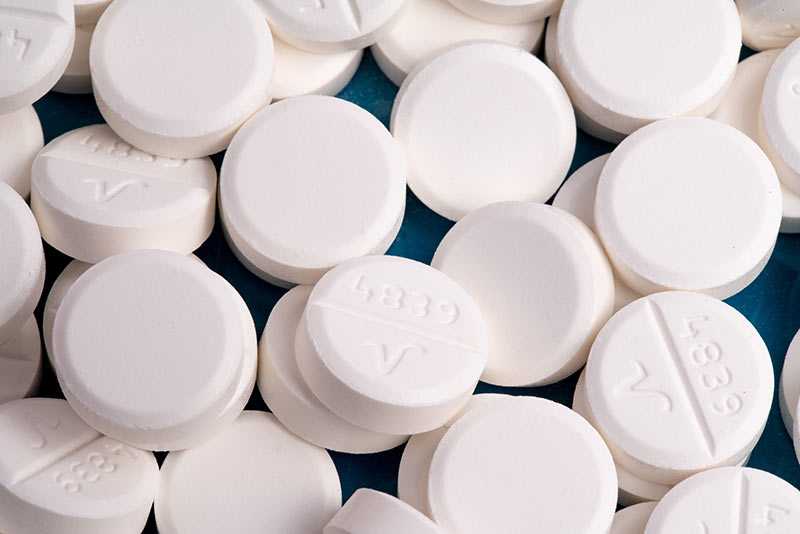Fentanyl: The Next Terrorist Threat?

Prescription medication is laid out on a pharmacists counting tray prior to being bottled.
America faces a public health crisis of terrible proportions—the opioid epidemic which has impacted so many people. While the onset of another pandemic -the Wuhan virus- largely removed the spotlight from opioids, as COVID-19 lockdowns are increasingly coming to an end, now is the time for policymakers to begin revisiting this vital issue. Not just because of the terrible toll in human life and misery opioids have caused, but because one particular opioid, fentanyl, is a potential WMD (Weapon of Mass Destruction) in the hands of terrorists.
The Rand Corporation called fentanyl, “The Most Dangerous Illegal Drug in America.” Classified as a synthetic opioid, deaths associated with fentanyl skyrocketed from 3,000 in 2013 to 30,000 in 2018. Fentanyl is cheaper than heroin and 30 times more powerful. The carfentanyl strain of fentanyl is astonishingly dangerous (more on that below). One of the reasons that fentanyl is so dangerous is because a dosage error of the equivalent to a few grains of salt can prove lethal.
And dosing errors are not uncommon, mainly because of the source of much of the supply of fentanyl: Communist China. Most illegal fentanyl -not all fentanyl is illegal; it has also been used for decades as a legitimate anesthetic and pain medication- comes from the same country responsible for the Wuhan virus pandemic. A substantial amount of fentanyl is produced in small labs spread throughout China without any regulation or quality control whatsoever. As Rand points out:
“…researchers found several Chinese firms willing to ship a kilogram of nearly pure fentanyl to the United States for as little as $2,000.”
Close ties between Chinese cartels and Mexican criminal drug cartels ensure the steady flow of fentanyl for use in cutting Mexican heroin. In 2018 the U.S. government indicted members of the “Los Zheng” cartel -a Shanghai and Wuhan-based criminal enterprise- for “conspiracy to manufacture and distribute controlled substances, conspiracy to import controlled substances into the United States, operating a continued criminal enterprise, money laundering, and other crimes.”
All of this is very disturbing, but only rises to the level of a national security threat when one considers a few key facts about fentanyl.
A US Customs and Border Patrol training document states: “A lethal dose of fentanyl is about the same size as just a few grains of salt.”
While there is some medical debate about the extent of the risk from incidental contact with fentanyl used as a heroin additive, anecdotally stories of dangerous fentanyl contact are common. In March 2017, a police officer in East Liverpool, Ohio had to be rushed to the hospital after he brushed an “unknown powder” off of his uniform. That powder ended up being fentanyl. In August 2018, at the Ross Correctional Institution in Chillicothe, Ohio, 29 officers, first responders and nurses were sped to the emergency room after an inmate spread just three grams of heroin-fentanyl mix around his prison cell. The U.S. Drug Enforcement Agency issued guidance encourages strict safeguards for emergency responders who may encounter fentanyl.
If accidental contact with fentanyl can readily cause serious illness and even death, we can be sure that Al Qaeda, the Islamic State and other terrorists have taken notice. In any case there is little doubt that in the hands of nefarious actors, such as terrorists, fentanyl can be used as a weapon of mass destruction.
The US Department of Defense researched the possibility of using fentanyl as a crowd control agent but determined it was far too dangerous to use as a non-lethal agent. That didn’t stop the Russians however, who not only weaponized fentanyl, but used it in a hostage situation in a Moscow theater resulting in the death of more than 100 hostages. CDC guidance makes clear that if properly weaponized fentanyl does not have to be ingested or injected to kill.
Security experts have long regarded fentanyl as a chemical weapons threat. The drug’s high toxicity and increasing availability are “attractive” to potential adversaries “seeking nonconventional materials for a chemical attack,” James McDonnell, a former assistant secretary at DHS wrote in a memorandum two years ago.
Bloomberg News reported in 2018 that 118 pounds of fentanyl could conceivably kill 25 million people. Of course, weaponizing fentanyl to achieve such a massacre would be no easy feat but other scenarios, such as a terrorist releasing a small quantity on an airliner, could result in hundreds of deaths. Moreover, manufacturing fentanyl is not difficult for anyone with decent knowledge of chemistry.
Even worse is a form of fentanyl known as Carfentanyl. A Canadian study posed the question, “Which would you choose as a weapon of mass destruction: a thermonuclear bomb or carfentanyl?”
The answer: Carfentanyl—and it’s not even particularly close. The study notes:
One kilogram of carfentanil represents 20 million fatal 50 μg doses, enough to kill half the population of Canada. On a per kilogram basis, carfentanil is arguably 2000-fold deadlier than a thermonuclear bomb.
There’s never been a drug like fentanyl before. For street drugs, fentanyl absolutely outpaces anything else in terms of lethality and danger. But most importantly, unlike drugs such as cocaine and crystal meth, fentanyl can be weaponized to create mass casualty events as a weapon of mass destruction- in similar fashion to long-known chemical agents such as Sarin, VX and mustard gas. But far easier to acquire. And as such it must be viewed differently from other drugs.
It is vital that policymakers at all levels of government take the fentanyl threat seriously and treat it not just as a drug and health problem, but a potential WMD threat in the hands of terrorists.
- President Trump Takes a Much Needed Step on Fentanyl - December 15, 2025
- Texas leads the way against the Muslim Brotherhood - November 25, 2025
- Defender of Freedom: Senator Jay Collins - August 4, 2025
